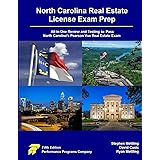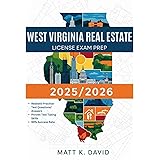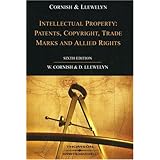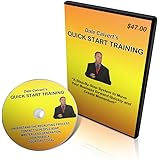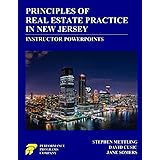Building a substantial real estate portfolio, even one valued at $25 million by a young age, is demonstrably achievable without relying solely on vast sums of personal capital. The featured video, showcasing the journey of Cody Davis and Christian, clearly illustrates how strategic approaches to real estate investing, particularly through creative financing methods, can lead to remarkable success. This detailed guide further explores the powerful strategies discussed, providing additional context and actionable insights for aspiring and seasoned investors alike.
The Foundational Principle: Deal, Then Debt, Then Equity
A critical lesson often highlighted in high-level real estate strategies is the unwavering focus on the deal itself, preceding considerations of debt or equity. Christian articulates this succinctly: “The order is always deal, then debt, then equity.” This perspective fundamentally shifts the investor’s mindset from “how much money do I have?” to “what makes this a valuable opportunity?” Consequently, the structure of the purchase, including the required debt and equity, becomes dictated by the inherent strength and potential of the property. Ignoring this sequence often leads to missed opportunities or poorly structured transactions.
Imagine if a promising multi-family property, with significant cash flow potential, is identified. Its value and profitability are evident, even if it requires a substantial upfront investment. Because the deal’s fundamentals are sound, various capital sources, both debt and equity, can be attracted to finance it. Conversely, possessing abundant capital without a compelling deal frequently results in overpaying or acquiring suboptimal assets. Therefore, meticulous evaluation of properties is paramount, emphasizing factors such as location, income potential, and growth prospects. This ensures that only high-quality deals are pursued, which naturally draw the necessary financial backing.
Unlocking Creative Real Estate Financing: Seller Financing and Hard Money
The path to acquiring properties without significant personal funds typically involves innovative creative financing options. Seller financing, where the seller acts as the bank and provides a loan to the buyer, stands out as a powerful tool. Cody and Christian effectively leveraged this strategy multiple times, including for the Robin Hood Resort and an additional acreage acquisition. This method bypasses traditional lending institutions, often offering more flexible terms, lower interest rates, or reduced down payment requirements, which greatly benefits buyers with limited liquid assets. From the seller’s perspective, seller financing can offer tax advantages, a consistent income stream, and a faster, less cumbersome sales process.
Beyond seller financing, alternative debt sources, such as hard money lenders or private investors, become vital for bridging financial gaps. Cody’s initial 12-plex acquisition, which was largely seller-financed, still required a $125,000 down payment. This sum was secured from an investor at a 12% interest rate, a rate considerably higher than conventional loans at the time. However, it facilitated the acquisition of a valuable asset. To persuade such investors, it is imperative to clearly articulate three key points: where the money is going, the stability of the asset backing it, and the clear repayment plan. These discussions are often informal, focusing on trust and mutual benefit rather than elaborate presentations. Such approaches allow investors to participate in profitable ventures, while providing crucial upfront capital for strategic acquisitions.
Strategic Property Acquisition: Case Studies and Market Focus
The journey from college dropout to $25 million portfolio owners is marked by strategic acquisitions and an unwavering commitment to growth. Cody began investing at 19, acquiring 30 apartments by age 21, while Christian transitioned from a corporate real estate role after realizing that active buying was essential. Their combined efforts led to a partnership focused on scaling. Within their first year as partners, approximately 90 rental apartments and a resort were acquired through seven or eight distinct transactions, demonstrating their aggressive yet calculated approach to portfolio growth.
The acquisition of the Robin Hood Resort exemplifies their deal-making prowess. Initially presented as a “zero-down” opportunity, it ultimately required a $1 million down payment on a $4.5 million purchase price. The seller carried a $3.5 million note for eight years, resulting in an annual debt cost of $154,000. Despite initial underwriting mistakes, the property generates approximately $100,000 per month in the summer, significantly offsetting its operational costs. Furthermore, the acquisition of a separate White House property across the street, also seller-financed with zero dollars out of pocket, added 2.5 acres to their resort assemblage, illustrating a proactive approach to expanding their holdings. Market selection is also crucial; Moses Lake was identified as an “opportunity market” through a real estate agent connection, emphasizing the importance of networking and remaining flexible in geographic focus rather than being confined to familiar areas.
Scaling and Management: Building a Robust Portfolio
As a real estate portfolio expands, efficient property management becomes increasingly critical. Initially, Cody and Christian handled all bookkeeping themselves, a common practice for startups seeking to maintain profitability. However, scaling necessitates professional assistance. Christian later took over their jointly established property management company, enabling them to manage approximately 180 units across different counties and states, with an additional 50 units under contract. Their operational model emphasizes focusing on individual “hubs” or localized areas to prevent being spread too thin, a common pitfall that leads to mismanagement and financial disarray. This consolidated approach allows for more efficient oversight, maintenance, and tenant relations across a large number of properties.
The cost of property management typically ranges from 8% to 10% of rents in many markets. However, by self-managing through their own company, Christian is able to operate at a discounted rate, around $50 to $60 per unit per month, compared to $75 to $85 per unit for third-party clients. This internal management strategy provides a competitive advantage, contributing directly to increased cash flow and profitability. The ability to control management costs is a significant factor in optimizing the financial performance of each property within a growing portfolio. Furthermore, the decision to delay gratification by reinvesting profits back into the business, rather than taking lavish salaries (they each pay themselves $60,000 annually), underscores a commitment to long-term stability and continued growth. This conservative approach to personal income ensures that sufficient capital is available for future acquisitions and property maintenance, significantly reducing financial risk.
Overcoming Challenges and Cultivating an Investor Mindset
The path to significant real estate success is rarely smooth, often presenting unexpected challenges. The 38-plex acquisition, for instance, involved overcoming issues such as non-paying tenants, drug dealing, and property disrepair, including a chicken infestation and bad roofs. Such situations necessitated a firm but kind approach, involving evictions and cash for keys agreements, where tenants are paid to vacate. It is crucial to process such payments via certified funds to avoid disputes. These experiences highlight the importance of robust due diligence and the capacity to manage complex tenant issues effectively. They also underscore that while finding capital can be straightforward for solid deals, the operational complexities of real estate demand continuous learning and adaptation, particularly concerning accounting and tenant management.
A key misconception about real estate investing is its perceived complexity. Cody asserts that while the game is “hard,” it is fundamentally “simple.” People own properties and rent them out. The difficulty arises from the effort, discipline, and problem-solving required, not from an inherently convoluted structure. Moreover, a surprising insight from experienced investors is that “everyone’s broke”—meaning cash is consistently deployed into new deals rather than hoarded. This strategy of constantly reinvesting cash flow into further acquisitions, even at the cost of personal liquidity, is viewed as a path to greater long-term financial freedom and wealth accumulation. Ultimately, the ability to acquire assets and systematically pay down debt is considered the true source of enduring financial power in real estate, offering stability by minimizing obligations.



